Let’s face it, link building isn’t easy.
But without proper metrics, it can get even harder.
If you want to get better at it, you need to identify what you’re already doing right and where you could use some improvement.
Simply counting links won’t cut it, so you need other success metrics too.
Not knowing what kind of metrics to use to measure your link building efficiency makes it extremely hard to reach the desirable results.
On top of this, it’s always good to know how you’re going to measure your link building campaign before you start building links.
It will help you set up realistic goals while trying to bring positive changes to your organic traffic growth trend.
When it comes to organic traffic growth, it’s good to mention from the very beginning that link building is just one part of the complex SEO process.
While links are extremely important, there’s a great number of other factors that can affect your site’s rankings.
There’s not much use in building a great number of top quality links if everything else is flawed, right?
This means that your pages should be well-optimized, paying attention to some basic things like titles and meta descriptions, mobile-friendliness, and so on.
Also, the pages you’re planning to boost via links should be targeting keywords with a decent search volume and, most importantly, need to be supported with well-written content.
Once you’ve taken care of the SEO basics, you’re ready to take your organic growth to the next level with some data-driven link building.
Here are the top three metrics you can use to measure the efficacy of your link building efforts.
1. Growth Trend of New Referring Domains
Ok, it might be captain obvious speaking, but the first metric you need to be tracking is the number of referring domains acquired month over month.
This helps you determine whether your link building machine is moving in the right direction.
Keep in mind that link building and overnight success rarely go hand in hand.
Growing a respectable backlink portfolio is a process that requires a lot of time and effort.
Normally, you spend the first few months just establishing relationships and getting a link or two here and there.
Only after that period, you can expect links to start knocking at your door.
Generally, we need around 2-3 months to start building a solid number of links for niches we never worked with. So yes, link building does take time!
But once you’re there, it won’t be long before you’re able to double the number of referring domains acquired on a monthly basis. Ideally, you should see a trend like this:
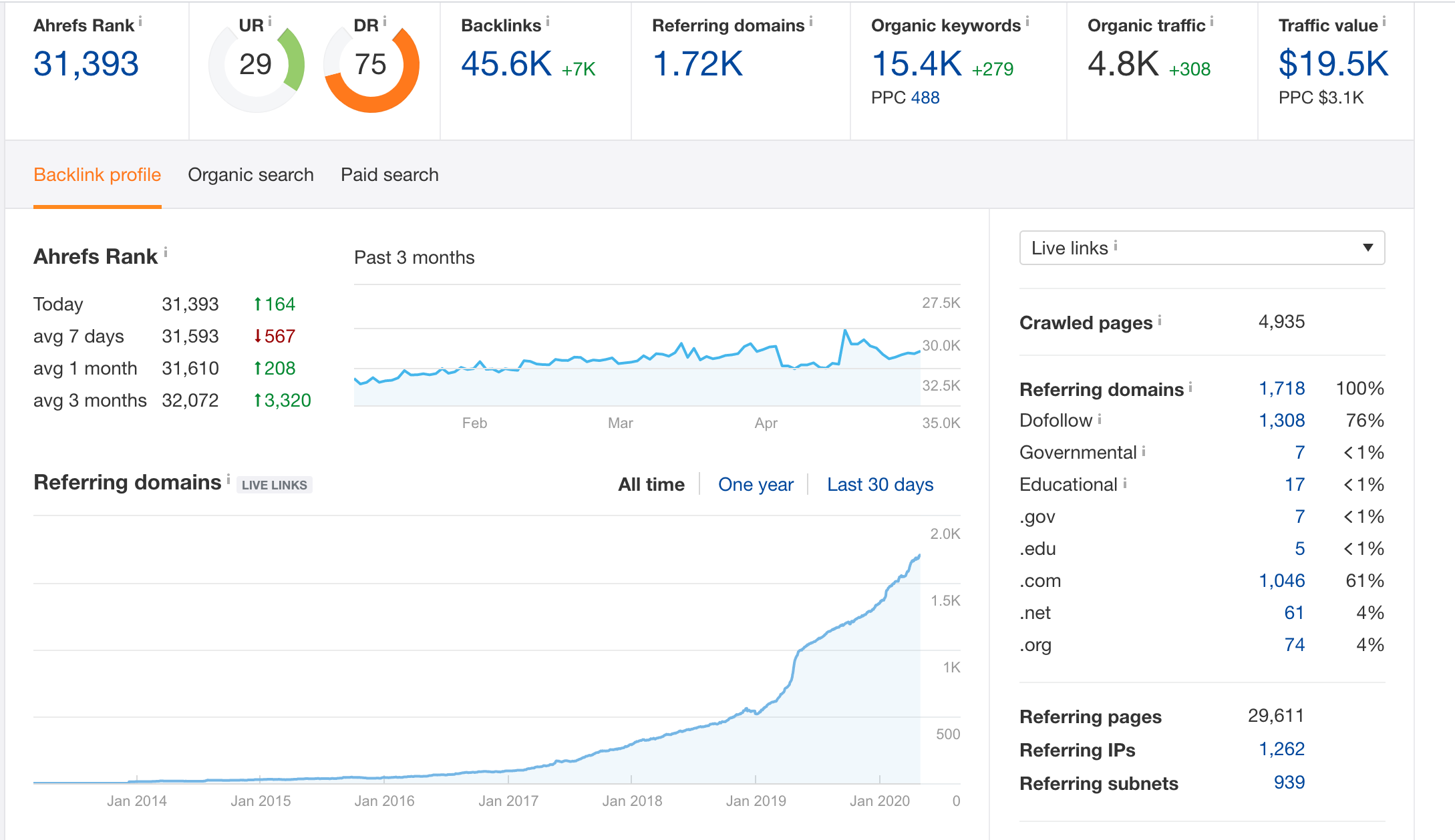
Besides your backlink profile growth, it’s good to occasionally check your competitors’ referring domains growth as well.
If you see some spikes in the number of their referring domains then it’s a positive sign that they’re also into link building.
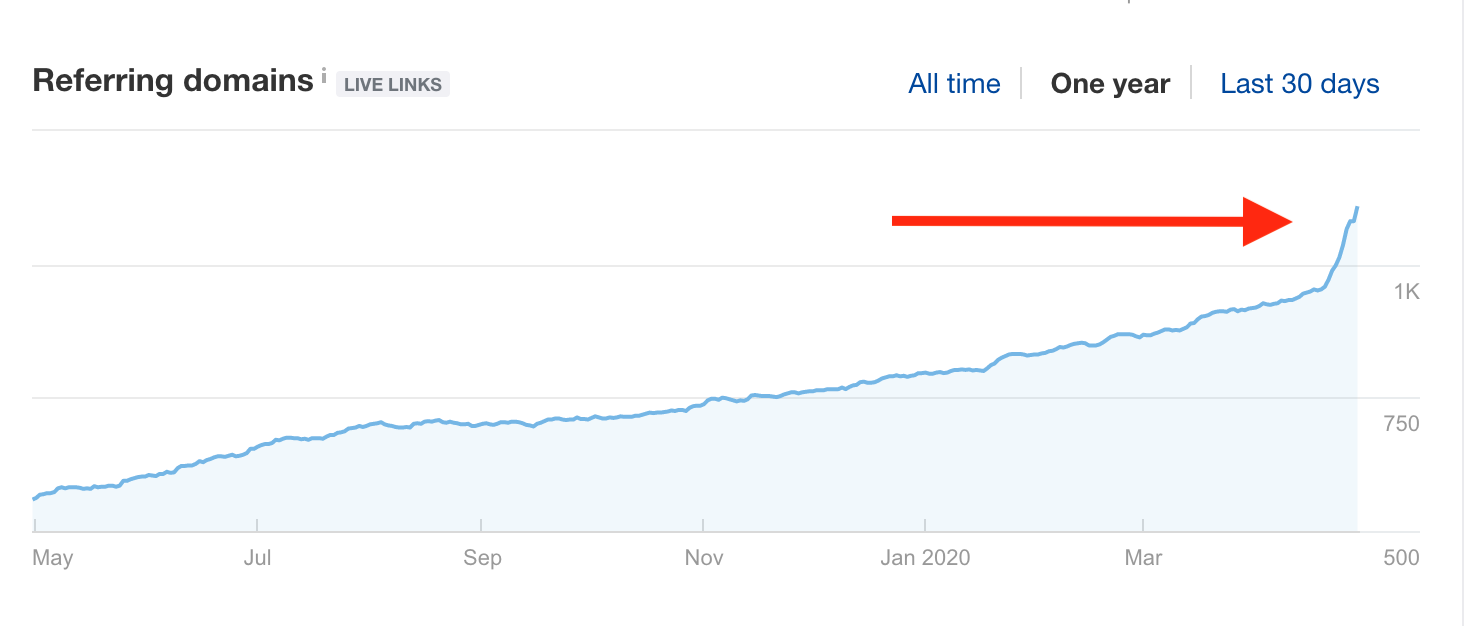
In fact, checking your rivals’ backlink profile on a monthly basis might become an endless source of inspiration for your own link building efforts.
Once you get your link building engine up and running, you’re likely to see some changes in Google rankings. This brings us to the second important metric.
2. Positive Changes in the Target Page Positions in Google Search
One of the most important goals we’re trying to achieve with link building is to improve the Google rankings of particular pages.
Ideally, we want to see our best posts in one of the top 3 positions, but the least we want to achieve is to get it to rank on page 1.
That’s why the next metric you want to keep track of should be the position of your target pages in Google search results.
Even though Google Search Console seems like the obvious place to track it, keep in mind that it doesn’t really show the exact numbers but an average position.
So, you’ll have to use a third-party position tracking tool if you want to get accurate data for this metric.
Personally, I use SEMrush to track exactly how my target pages are becoming more visible in Google SERPs.
To facilitate the entire process, I use the tagging feature to label search queries related to one page and easily filter them out from the rest of the keywords.
In the screenshot below, I asked SEMrush to show me the search terms labeled with the “email outreach” tag and their changes in positions during the past 30 days:
![]()
As you can see, the main keyword “email outreach” has remained in the same position and that’s something that rings a bell.
If you’re facing a similar situation, the next step is to learn more and find out why.
To find the answer, you need to go to the Ahrefs Keyword Explorer tool and search for your keyword.
After you do this, you’ll see what kinds of pages are currently ranking on the first page of Google for that particular search query:
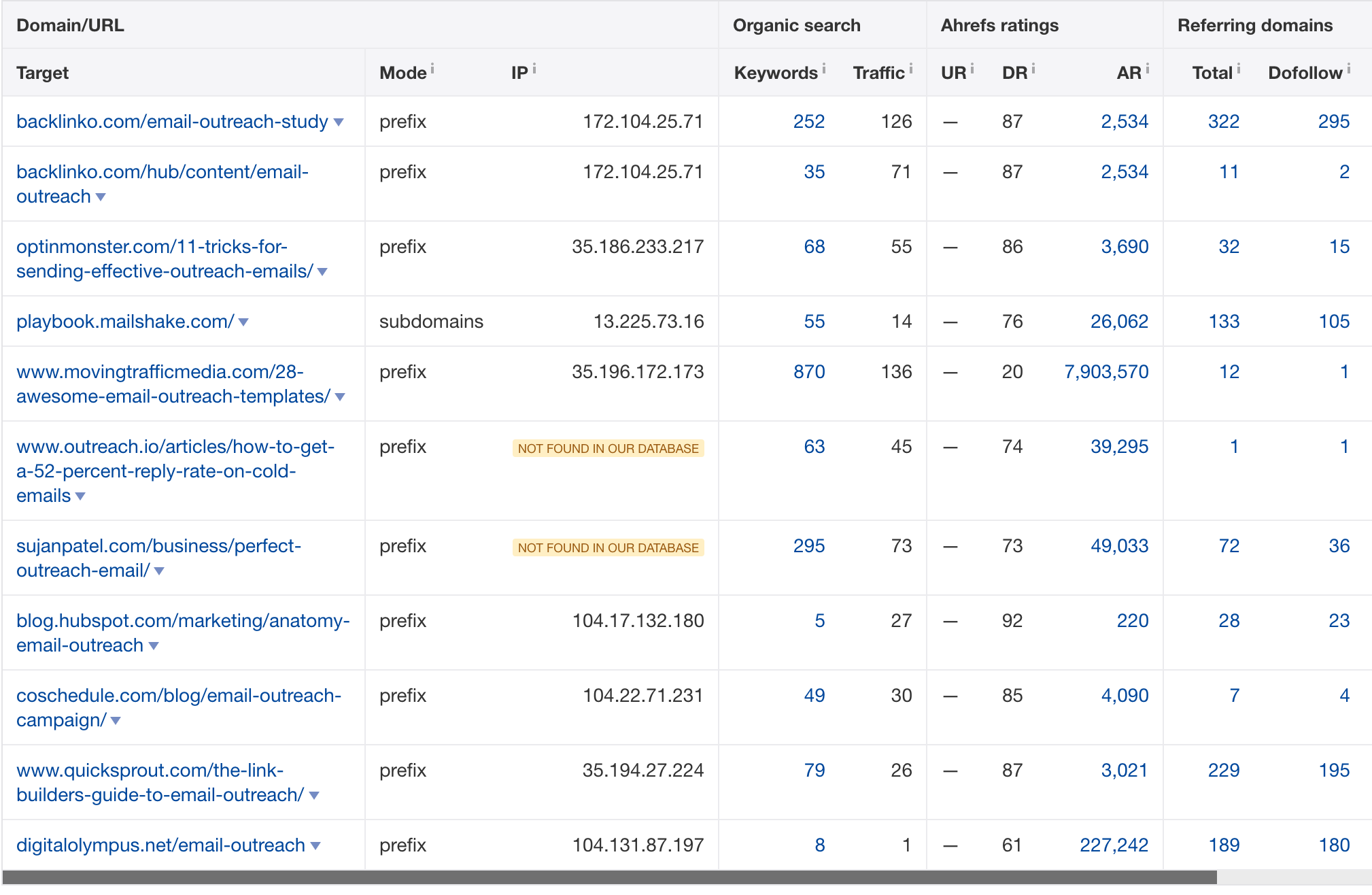
The main thing to focus on here is the number of referring domains.
You should compare the number of referring domains your page has with the numbers for pages that are currently outranking you.
Another important factor to take into account is the website’s domain rating (DR). How does your DR compare to the DR of pages that rank better?
In our case, Digital Olympus has a DR of only 61, while most of the pages in the top 10 results go above 70 with some of them even having a DR of 90+.
This means that Digital Olympus needs to build 4-5 times more links back to a page to outrank those pages and that’s the reason why our positions haven’t really been growing in the past month.
The higher your DR, the easier it will be for your pages to rank.
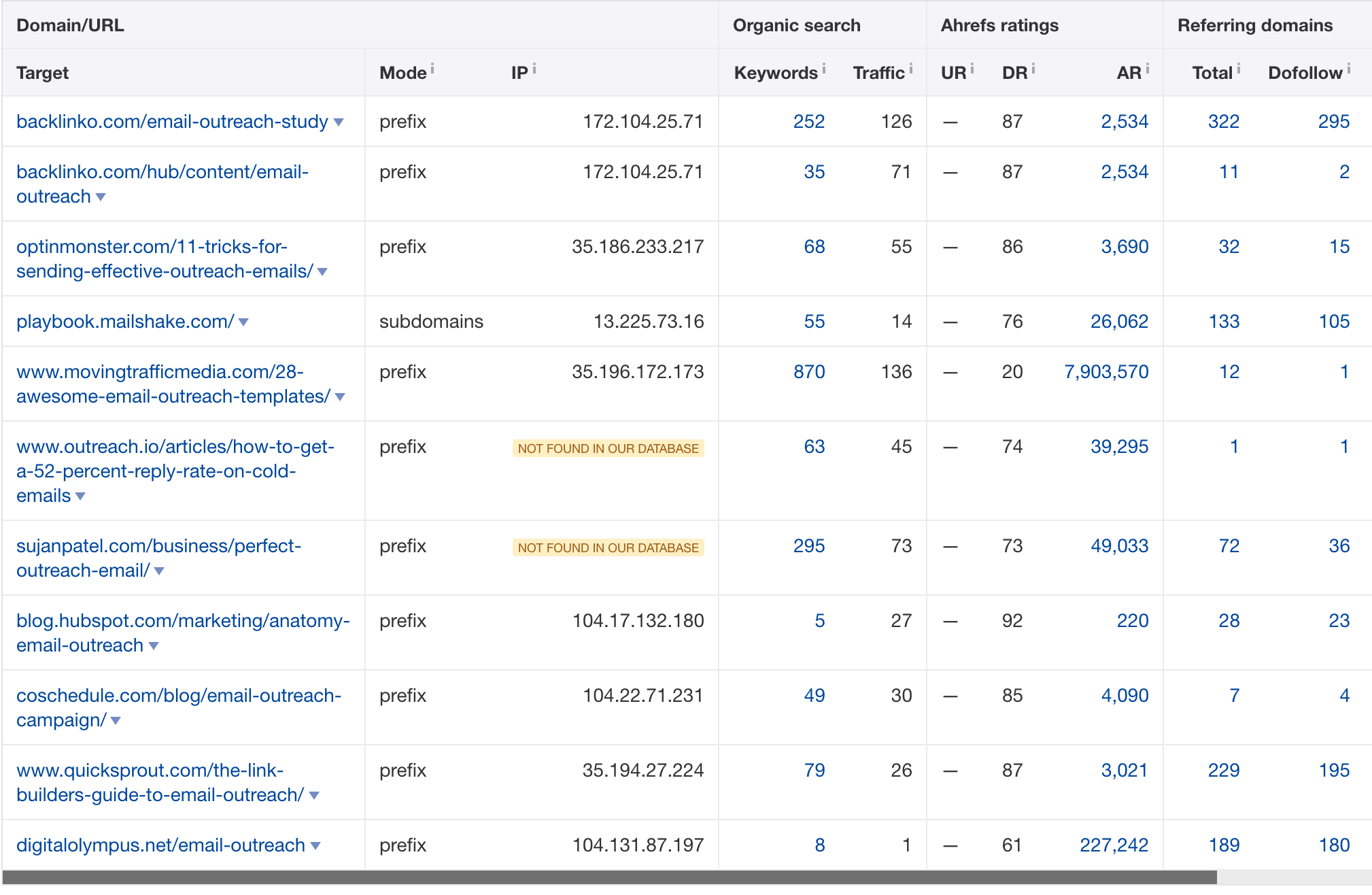
More referring domains and better positions in Google search naturally lead to one thing – an increase in organic traffic to your website.
3. Organic Traffic Growth
After all, growing organic traffic is the main reason why we’re into link building. That’s why this should be the third essential metric you need to track.
Organic traffic growth can easily be tracked directly from your Google Analytics or Google Search Console account.
I prefer to use Google Search Console as it also allows me to check whether the number of impressions and average positions are growing for a particular page:
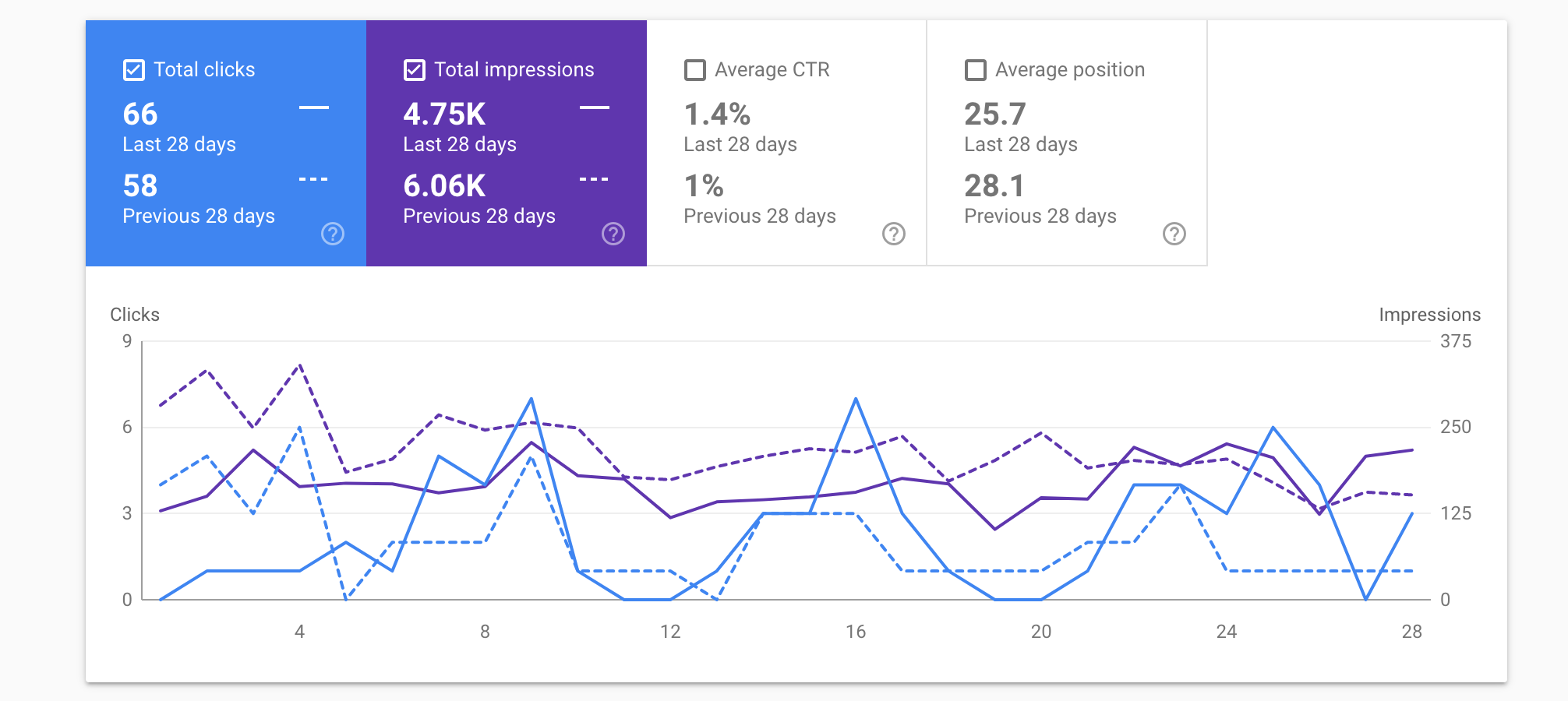
However, it’s important to note that it might take some time for Google to reevaluate your site and make it more visible in SERPs.
Depending on how competitive your niche is, it might take anywhere from 3 months up to 12 months from the moment links are built to see significant changes.
To better understand how long it takes to start ranking well and receiving a better flow of organic traffic, you can try analyzing the history of good-ranking pages belonging to similar sites within your niche.
Here’s a good example to better illustrate what I’m talking about:
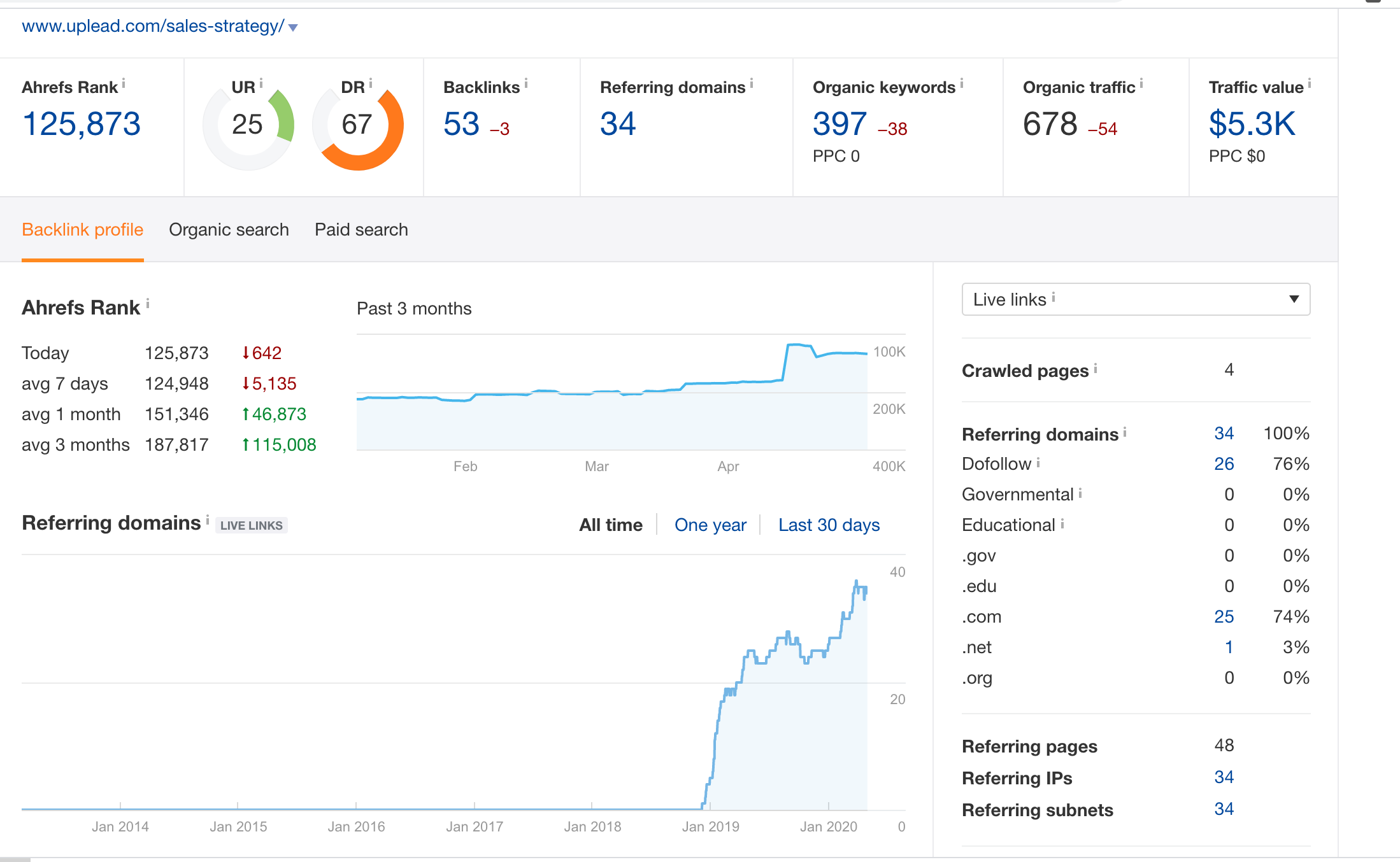
As you can see from the graph above, they started building links back to this page in January 2019 and managed to grow 34 referring domains so far.
And here’s their organic traffic graph:
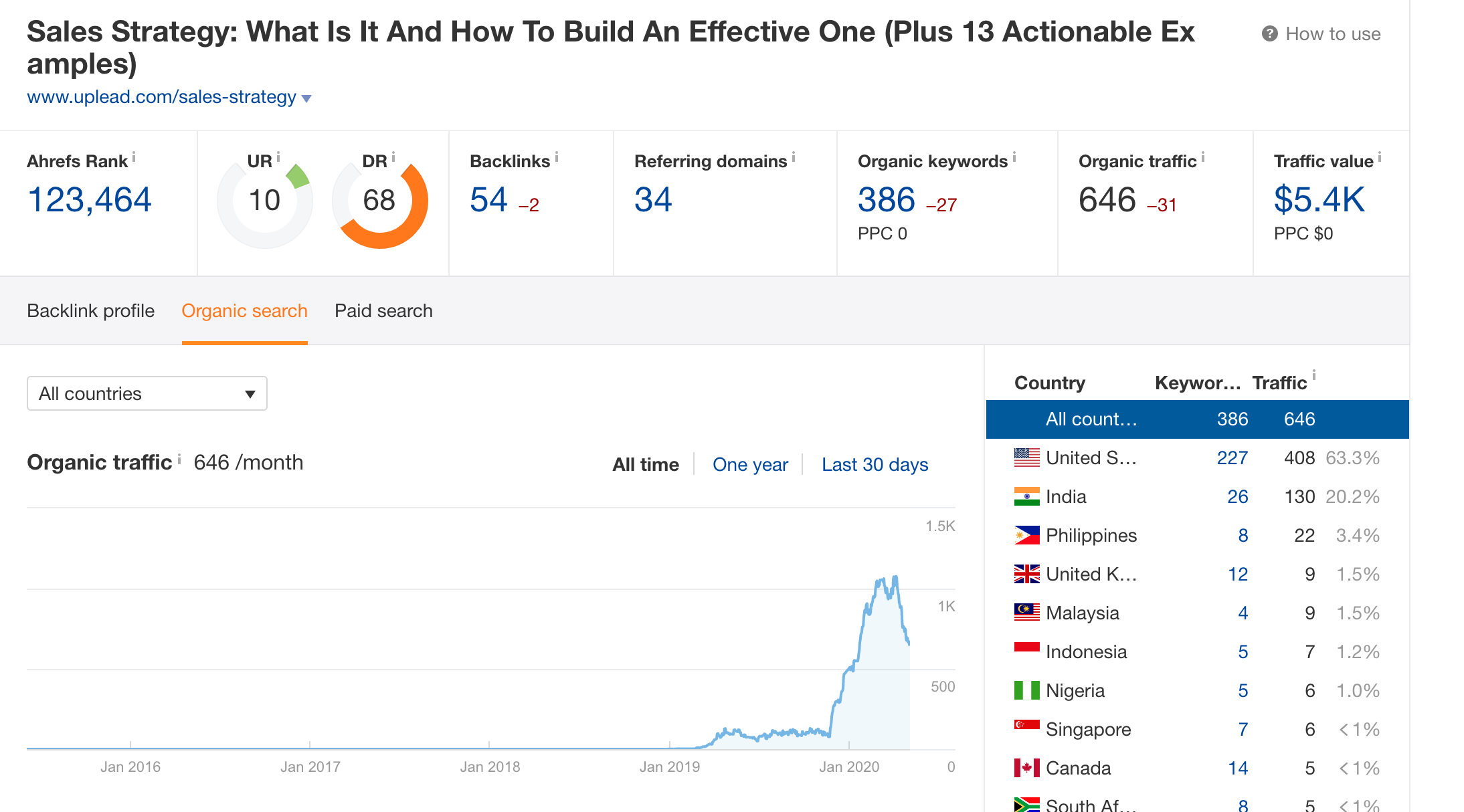
By comparing their organic traffic report to the backlink profile above, we can see that it takes around 12 months to start getting traffic.
Let’s take a look at another example of more recent link building data.
The screenshot below shows that Tidio started building links back to their blog post about chatbots in January 2020.
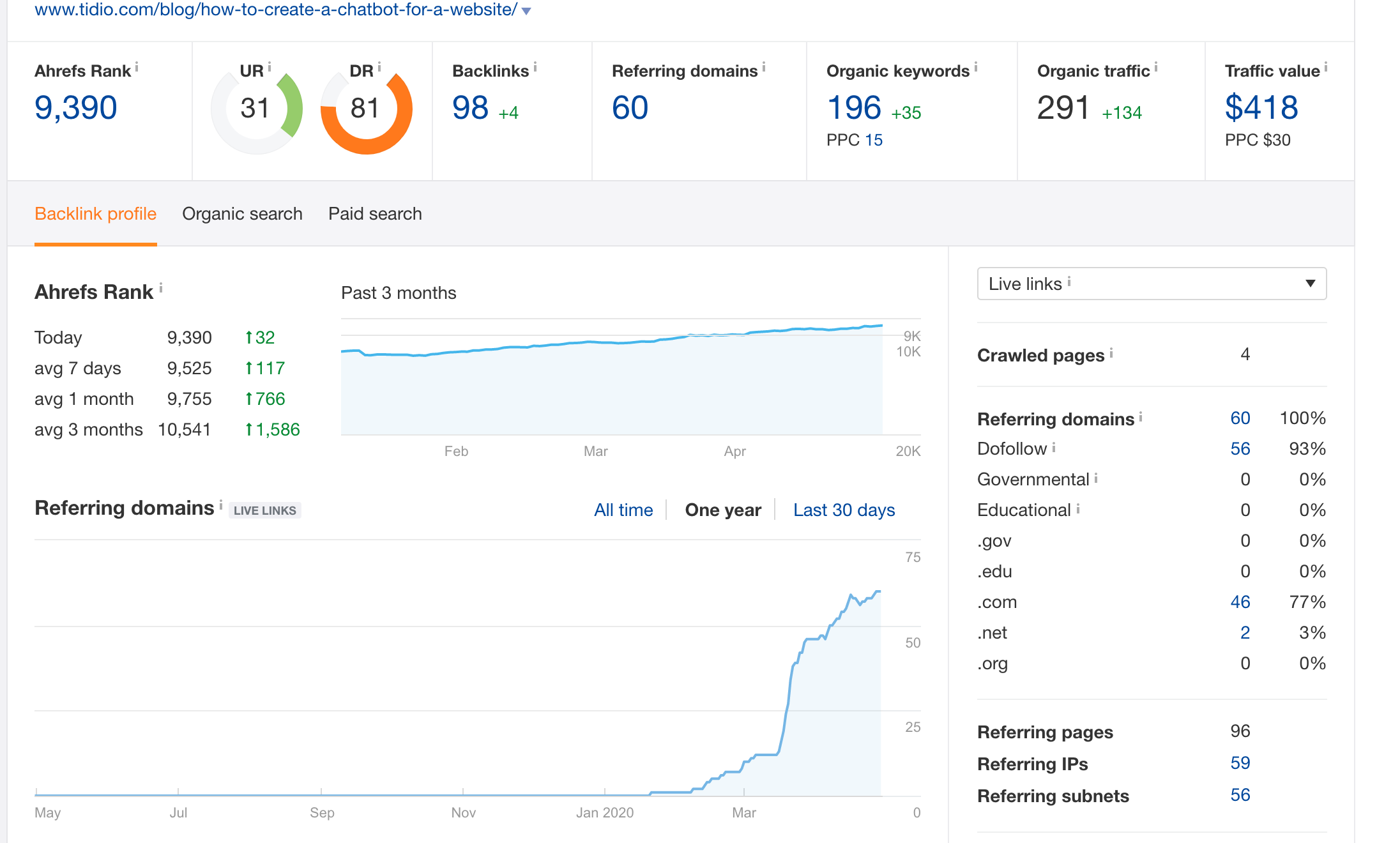
As you can see above, they’ve relatively quickly managed to get up to 60 referring domains. But how quickly did this reflect on their organic traffic?
The SEMrush report below shows that they got their first organic visitors in March. So, we can conclude that it took around two months for the link building results to kick in.
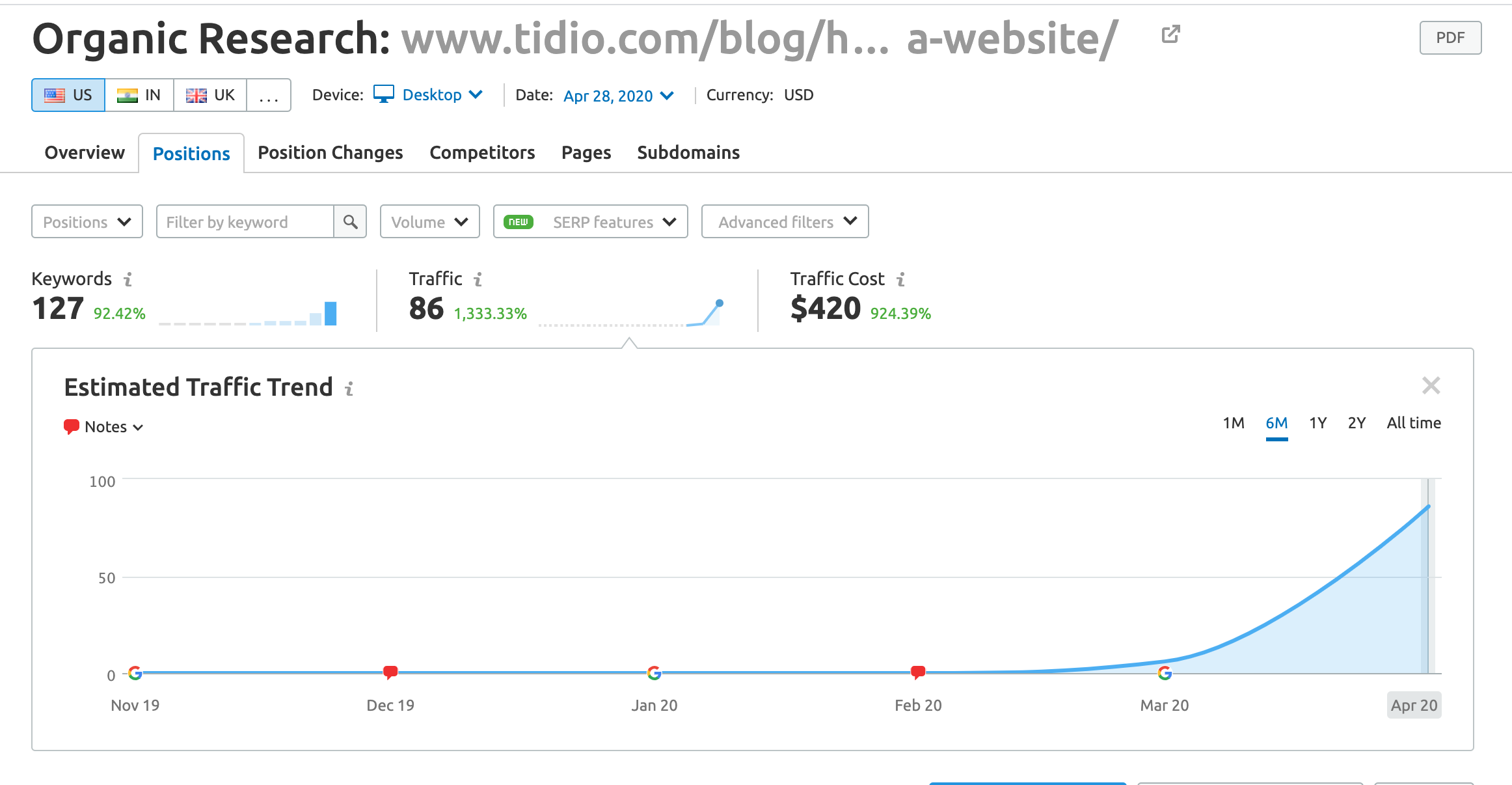
Conclusion
As you could see in the examples above, link building takes time.
But once the results start to show, you’ll instantly know it was worth the wait.
The worst thing that could happen, however, is to spend months working on link building with no tangible results.
To prevent this from happening, it’s essential that you track the progress of your link building by using the three vital metrics presented in this post.
If you count the number of new referring domains, keep track of target page search result position changes, and measure the overall organic traffic growth, you should have a fairly accurate overview of your link building effectiveness.
More Resources:
- Link Building for Beginners: How to Get Started
- Link Building Guide: How to Acquire & Earn Links That Boost Your SEO
- Link Building Fundamentals
Image Credits
Featured Image: Created by author, May 2020
All screenshots taken by author, May 2020





